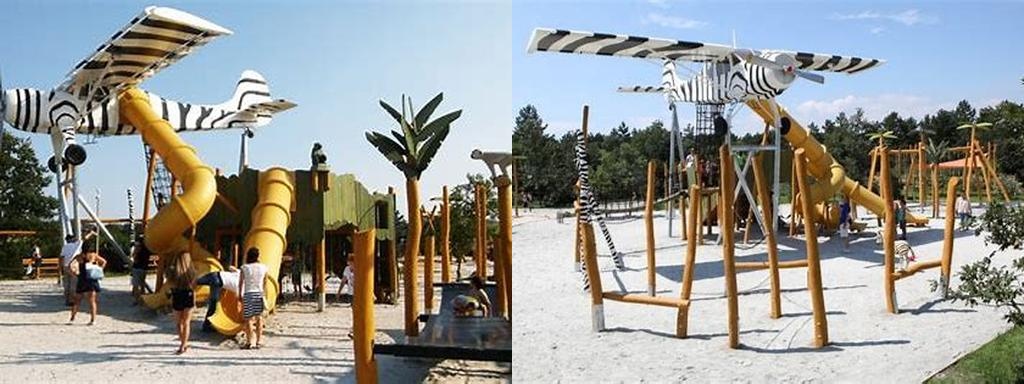
Kittenberger Kálmán Növény- és Vadaspark isn’t just your average menagerie—it’s a place where nature, history, and a touch of Hungarian eccentricity collide gently under the leafy trees of Veszprém. If you’re ever making your way through the rolling hills of central Transdanubia, you’d be remiss not to make a stop at this intriguing park, which threads together stories of exploration, natural wonder, and the simple, gleeful joy of animal encounters.
Let’s start with the name: Kálmán Kittenberger. Who was he, anyway? Born in 1881, Kittenberger was a pioneering Hungarian naturalist and big-game hunter whose adventures across Africa between 1902 and 1926 became legendary. He returned home with trunks full of specimens, stories, and a vision to share the wonders of the wild with those who might never leave Hungarian soil. It’s only fitting that the botanical and wildlife park in Veszprém carries his name as a tribute to his insatiable curiosity and love for the natural world.
Walking into the park, it’s immediately obvious that this is no sterile zoo from a distant, less animal-friendly era. The design is refreshingly open, weaving visitors through hilly woodland and leafy glades, where peacocks occasionally parade past and the breeze smells faintly of pine needles and wildflowers. The original park opened its gates back in 1958, and over the decades, it has grown and evolved—much like a living organism. If you visit on a sunny weekend, you’ll find the paths bustling with families, students, and travelers. Everyone shares one thing: childlike anticipation to meet the creatures that inhabit the colorful world within these historic walls.
One of the park’s most captivating features is how seamlessly it brings together native Hungarian fauna with more exotic species from beyond Europe’s borders. On one hand, you have lynxes lounging in dappled light, wolves tracing their territories, and owls blinking quietly in the shadows of old oaks. On the other, the African Savanna enclosure is a riot of stripes and power—zebras munching grass beside lanky giraffes, with ostriches peering curiously at visitors. If you venture a bit further, you’ll catch the park’s troop of ring-tailed lemurs sunbathing, tails curled like question marks, as if they’re inviting you to ask about their distant home, Madagascar. And then there are the little discoveries: red pandas nestled in the foliage, turtles sunning themselves on the banks of quiet ponds, and the occasional wallaby hopping along an improbably green patch of grass. 🦒
But the Kittenberger Park isn’t just about looking at animals through a fence. There’s a remarkable emphasis on education, conservation, and close encounters. The Veszprémi Állatkert organizes regular feedings, keeper talks, and adventure trails for kids, mixing fun with a gentle but important lesson—our world is fragile, interconnected, and in need of guardians. Don’t be surprised to see Hungarian schoolchildren gathering around a zookeeper, wide-eyed and giggling as they’re introduced to an armadillo or shown just how giant a stork’s nest can be. This attention to the small details—the frog chorus at twilight, the look of wonder on a child’s face—makes the park endlessly charming, whether you’re traveling with little ones or simply young at heart.
Botanical enthusiasts haven’t been forgotten, either. The plant collection is delightfully eclectic, featuring hundreds of native and exotic species threaded through themed gardens. In spring and summer, the meadows burst with colors and the air is thick with the pollen-laden hum of bees. If you pause on a quiet bench, the soundscape shifts depending on the season: sometimes goldfinch song, sometimes the croak of frogs, sometimes just the wind rippling through leaves. Even the greenhouses are worth a detour, especially if you’re keen on rare orchids or carnivorous plants that look like they belong on an alien planet.
The surrounding Veszprém landscape—often called the “City of Queens” for its historical significance—provides a captivating backdrop. From the park’s higher paths, you can catch glimpses of the city’s castle district, red-roofed houses, and the meandering Séd creek below. This connection between cultivated beauty and wild nature reflects much of what’s special about the park: it belongs as much to the city as to the world beyond it, rooting the wonders of Africa, Asia, and South America right here, in the heart of Hungary.
If you’re seeking somewhere that’s more than an ordinary day out—somewhere to fuel curiosity, conversation, and reflection—Kittenberger Kálmán Növény- és Vadaspark promises plenty in the way of discovery. You might come for the big cats, or the petting farm’s donkeys, but chances are, you’ll leave thinking about something entirely different: maybe a flash of dappled sunlight in the lynx enclosure, a snippet of history, or the small, stubborn hope that if we know and love our wild neighbors, we’ll do more to protect them.
Visiting this park is not only a walk on the wild side, but an engaging lesson in Hungary’s special place in ecological storytelling—one where every step brings a new surprise, and every surprise, a new reason to keep exploring.





